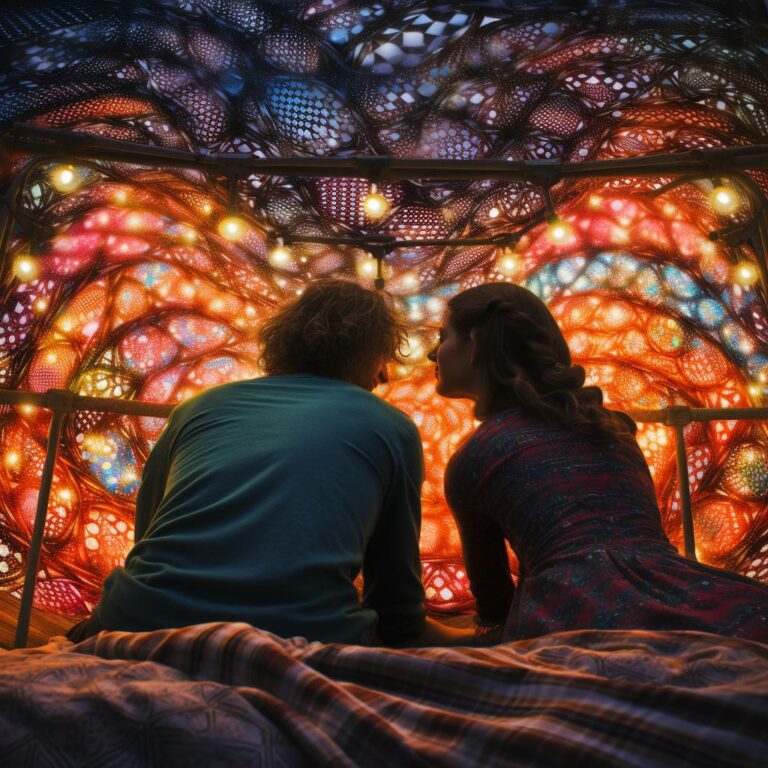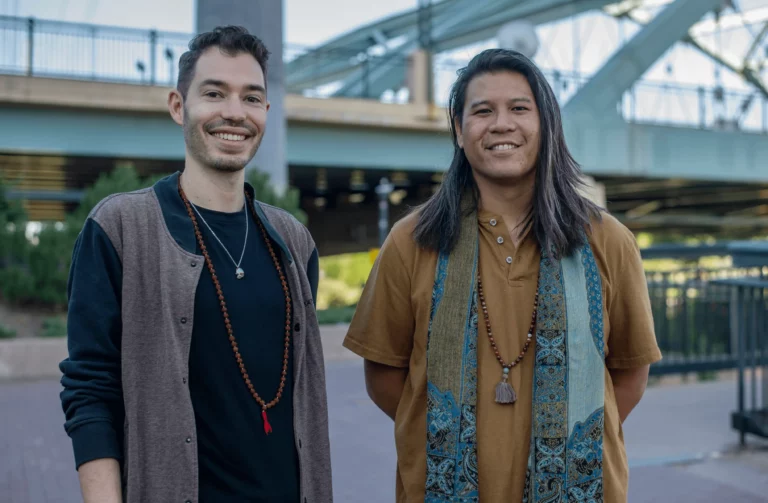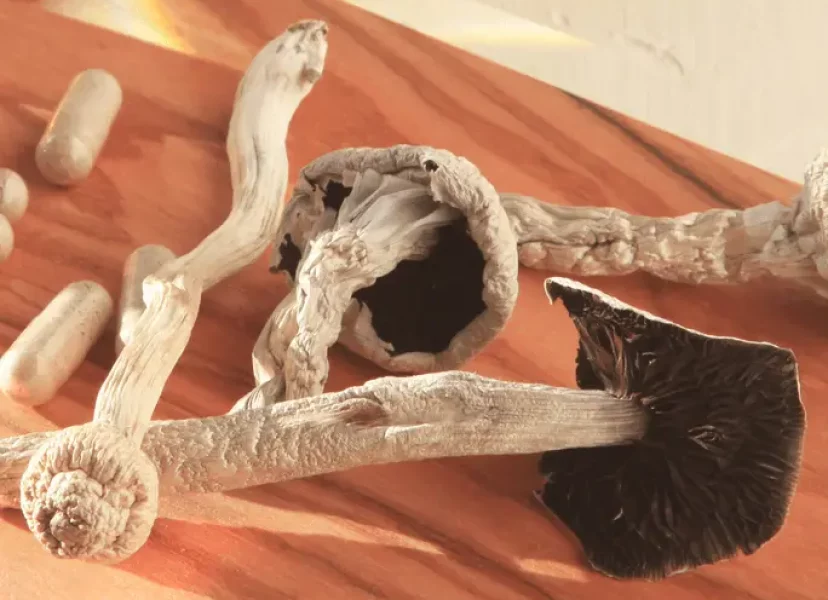Through the lens of Western culture, psychedelics may not appear medicinal at all—they are often portrayed by the media as being dangerous and immoral. Human history, however, paints a different picture of psychedelics (also referred to as entheogens). Accounts across cultures and continents demonstrate widespread use of psychedelic compounds with healing and medicine in mind.
Despite what current American drug policy would suggest, psychedelics have a long and storied history of use in healing the mind and psyche. Here, we’ll discuss the origins of psychedelics for healing and wellbeing.
We’ll illuminate the history of different psychedelic compounds, illustrating the medicinal role entheogens can have for people of all backgrounds. This will include a discussion of the origins of different substances, their effects, and how they have been used in different medicinal traditions throughout their history—and ours.
It is true that Western medicine tends to separate mental health from physical wellbeing. However, this dualistic approach is not representative of other medicinal traditions throughout human history. It’s important to understand this, not just as we explore the history of psychedelics for healing, but also as we contemplate the current medicinal applications of psychedelic compounds.
Defining “Healing” with Psychedelics
While many of us associate psychedelics primarily with recreational use at music festivals and on camping trips, this connotation with entheogens is a relatively new one. Psychedelics, which (with a few notable exceptions) tend to be derived from plants, have a long history of being used within the context of medicine and healing.
The diverse legacies of psychedelic use in various cultures predate recorded history, with cave paintings of mushrooms and the infamous Mayan “mushroom stones.” The presence of psychedelic plants in ancient art and culture communicates much about the role of entheogens in the human experience. Recording information took quite the effort thousands of years ago, so if something was painted on a wall or etched into stone, it must have had great significance.
Entheogenic medicine reflects our need to connect with concepts, ideas, and energies greater than ourselves, and has great potential to bring healing and understanding in a way that traditional therapies may not.
We don’t mean to imply that an entheogenic experience can’t be undertaken solely for pleasurable purposes. These trips absolutely can, have been, and will continue to be taken by people of all walks of life. However, like so many other medicinal compounds, the ability for psychedelics to be used recreationally does not reduce or negate their potential health benefits.
These benefits tend to be primarily emotional and psychic but may also extend to physical health as well. This isn’t entirely surprising when we think about it. As we mentioned before, mental and physical health are much more intimately interrelated than the philosophy of Western medical practice would have us believe.
The Historic Role of Psychedelics in Healing
Examples of the use of psychedelics for healing can be found across cultures, continents, and centuries. In fact, the Inuit of far northern Canada are one of the only recorded civilizations without any documented tradition of psychedelic use, and even then, absence of evidence is not necessarily evidence of absence.
In the case of the far-Northern Inuit, their environment does not produce much vegetation. To illustrate how much is “not much,” the standard Inuit diet consists of about 98% animal products. Consequently, entheogenic plants would be a rare find indeed, but not necessarily impossible.
From the ancient people of India to the South American rainforests to the Greeks and Romans, from whom Western medicine draws so much influence, history tells us unequivocally that psychedelic experiences are deeply human. While there are many aspects of the cultural context of psychedelics that differentiate one tradition from another, there are just as many common threads that connect these experiences with altered states of consciousness.
This ability of psychedelics to alter our perceptions is the heart of their healing potential. One of the most powerful uses of psychedelics is to connect with the divine. While the language we use to describe this connection varies, there are unifying principles between psychedelic experiences. Psychonauts describe a feeling of oneness with the universe accompanied by feelings of contentment and peace granted by a higher understanding.
While that higher understanding is difficult to define in scientific terminology, it doesn’t mean that the healing phenomenon of the psychedelic experience is imagined. We see this in the application of entheogens to depression, anxiety, post-traumatic stress disorder, end-of-life care, and other conditions. Depression and trauma-based conditions, in particular, respond very well to psychedelic treatment methods.
While we don’t have a full scientific understanding of the actions of psychedelics on the brain, we can make some observations about how these substances help us heal.
Depression, PTSD, and anxiety are isolating conditions that disconnect us from our own minds and bodies as well as from society at large. Since psychedelics help us to feel more connected with others and induce a sense of wellbeing, we can use these experiences to help us rebuild those connections in daily life. It is this ability to improve connectedness, reduce anxiety, and elevate understanding that lie at the heart of psychedelics’ therapeutic potential.
Origins of Psychedelic Use In Humans
Much like humanity itself, the history of psychedelics isn’t a linear, homogeneous entity. Rather, it’s a rich patchwork of different traditions, compounds, and cultures. It’s impossible to do each tradition justice in a short article, but we’ve done our best to be both accurate and brief. For further information, check out the research links for each type of psychedelic.
Psilocybin
Psilocybin is perhaps the entheogen with the best-documented history. Found in different species of mushrooms and fungi on every continent except for Antarctica, psilocybin is (relatively, of course) well-understood in the context of healing. Our earliest records of psilocybin use come from South America, where a substance called teonanácatl was used to induce visions as an important part of Aztec spirituality.
The Aztecs are understood to have used teonanácatl (“flesh of the gods” in English), which modern scholars believe to be a type of hallucinogenic mushroom. Aztec spirituality also included the use of morning glory seeds and peyote, and perhaps other naturally occurring psychedelics.
Modern Central American indigenous cultures continue to use psilocybin as a part of spiritual practice as well. These include the Mixtec, Mazatec, Zapatec, and Nahua peoples of modern-day Mexico, Guatemala, and El Salvador.
In Western society, interest in psilocybin is much younger, only dating back to the 1950’s or so when a mycologist by the name of R. Gordon Wasson traveled to Mexico to study the endemic flora, bringing samples back with him.
Wasson then collaborated with Albert Hofmann (more on him in a moment) to isolate psilocybin from the mushrooms. This was (to our understanding, at least) the first instance of chemical isolation of psilocybin, and helped to enhance our understanding of the effective components in entheogenic mushrooms.
While there was much interest in the recreational use of psilocybin mushrooms in the sixties and seventies, researchers also took notice. Some of the more inventive ones began to experiment with using these compounds in a therapeutic setting.
While they met with resistance from the mainstream academic community, their findings demonstrated that psilocybin could ease depression, calm anxiety, and heal the wounds of trauma. Psilocybin therapy began to develop a small but intensely dedicated following, one that continues today.
Ayahuasca
Brewed primarily from the vines of the Banisteriopsis caapi endemic to Central and South America, ayahuasca use dates back to at least 1000 AD in what is now Bolivia. Accounts from European colonizers in the 16th century describe ayahuasca as “the Devil’s work,” and missionaries dedicated considerable effort to discourage its use.
The success of that often violent and terrible campaign, however, was dubious. Today, there exist a number of religious and spiritual movements that involve the use of ayahuasca during ceremonies.
Recipes and compositions vary by tradition and by region, but the finished brew usually contains DMT, alkaloids, and a compound called harmine. The healing tradition of ayahuasca survives in the modern era, with indigenous people partnering with Western healers to expand and promote its use in a ceremonial setting.
When originally isolated from Banisteriopsis caapi, harmine was called telepathine, an objectively much cooler name. However, it was later found to be chemically identical to a substance that had already been isolated from a different plant, Peganum harmala. Since the compound was named for Peganum harmala first, that name won out.
Mescaline/Peyote
Mescaline is the scientific name of the active ingredient in the peyote cactus, from which it is often derived. However, it also occurs in other types of cactus, such as the San Pedro, Peruvian Torch, and other members of the phylogenetic family Cactacea. Peyote has been used for at least 5,700 years by modern-day Mexico’s indigenous tribes.
When used traditionally, the peyote cactus is cut near the earth, leaving the established taproot and raw edge behind. As the plant begins to recover from the cutting, it produces small, button-sized heads.
These heads are then cut and dried before being chewed or brewed into a tea. In modern practice, the cactus may also be ground and placed into capsules. This is because the plant tastes quite bitter, and encapsulating it helps to avoid the unpleasant taste.
While relatively few empirical studies on the effects of mescaline have been conducted since the 1970’s, it’s garnering a renewed interest as of late. Some practitioners and researchers believe that mescaline may be used to treat depression, alcoholism, and other conditions. Famous author William S. Burroughs believed that it could be used to effectively treat opioid addiction, and peyote may help to release the grip of other addictive behaviors.
MDMA
MDMA differs from the psychedelics we’ve discussed to this point. Unlike the plant-derived entheogens, MDMA was first synthesized in a laboratory setting. Its creation may have been part of an effort to create compounds that could be used to stop bleeding, and little is known about who created it or when.
The first record of MDMA comes from a German patent application dated 1912. The patent lists MDMA as an “important intermediary” between the body and other substances, but no pharmacology is provided.
In modern times, MDMA began to emerge in the form of “designer drugs,” both alone and mixed with other substances. However, experimental researchers also began to incorporate it into clinical practice during the 1970s. The foremost of these was George Greer, MD, a west coast physician.
Dr. Greer’s work documents the potential application of MDMA to treat addiction, to facilitate communication in relationship therapy, and to improve self-insight during individual therapy sessions. More modern research suggests that MDMA may also be beneficial in healing post-traumatic stress disorder (PTSD). This is particularly exciting because there is evidence that MDMA therapy may also be beneficial for complex post-traumatic stress, a difficult and often debilitating condition that tends to be difficult to treat successfully with mainstream therapy.
DMT
Plants containing DMT have been used in spiritual and medicinal practice by South American tribes for at least as long as ayahuasca. The compound occurs naturally in many plants and animals, and has dozens of structural and functional analogs throughout the natural world. During the 1960’s, DMT was colloquially known as the “business trip” for its ability to compress all the depth of a psychedelic trip into a much shorter period of time than other entheogens.
While it has been used for centuries in a spiritual context, the psychedelic effects of DMT weren’t well-understood until 1956 by physicist and chemist Stephen Szara. In the decades to come, DMT was found to have potential therapeutic applications for healing from trauma.
The experience of DMT has been likened to experiences around death and dying. It should be understood that people draw this comparison not because of a morbid feeling with DMT, but because of the sense of wholeness, connection, and peace in the experience.
LSD
Decidedly the most famous of the synthetic psychedelics, LSD was first synthesized in a laboratory by noted chemist Albert Hofmann in 1938, the same individual who collaborated with Wasson in psilocybin research. The formula was noted and quietly put away at that time, resurfacing five years later when Hofmann revisited the compound. He discovered its psychedelic properties after absorbing a small quantity transdermally, during handling. As Hofmann tells it, he became:
“… affected by a remarkable restlessness, combined with a slight dizziness. At home I lay down and sank into a not unpleasant intoxicated-like condition, characterized by an extremely stimulated imagination. In a dreamlike state, with eyes closed (I found the daylight to be unpleasantly glaring), I perceived an uninterrupted stream of fantastic pictures, extraordinary shapes with intense, kaleidoscopic play of colors. After about two hours this condition faded away.”
Hofmann’s experience sparked intense interests in the potential applications of the new compound, and research began in earnest. The torch of curiosity was taken up by American researchers as well, who tested the compound on, potentially, hundreds of creative minds during the 1950s and 60s.
LSD is believed by many psychedelic therapy practitioners to be applicable in healing depression, alcoholism, post-traumatic stress, and anxiety, among other conditions. While the compound remains illegal in most places, there exists some pretty compelling evidence to support their claims.
One study of relapsed alcoholics in Alcoholics Anonymous found that a year after a dose of LSD, half of the participants remained sober. This success rate has never been duplicated by any other means, suggesting that there is merit to the idea that entheogens can be used to effectively treat addiction.
Takeaway
While there is still much mystery and intrigue surrounding psychedelics in modern culture, the use of entheogens to heal our minds and spirits is nearly as ancient as humanity itself.
When we examine this storied and diverse history without the preconceptions by Western ideals, we can begin to understand the role that psychedelics can play in healing and recovery of all types. Though traditions and practices vary over cultures and continents, there are unifying threads that bind these healing psychedelic experiences together.
While these substances can provide extremely powerful healing, they also must be used with care and intentionality. As with everything in life, using psychedelics comes with some risks that you should be aware of. The good news is that the majority of these risks can be mitigated or avoided altogether. That’s why it’s so important to be professionally supported on your wellness journey with psychedelics.
We’ve written a number of different articles to help you prepare for and integrate your psychedelic experience. However, if you need more specific, personalized help, we encourage you to schedule a discovery call with one of our psychedelic guides or trip sitters today.



